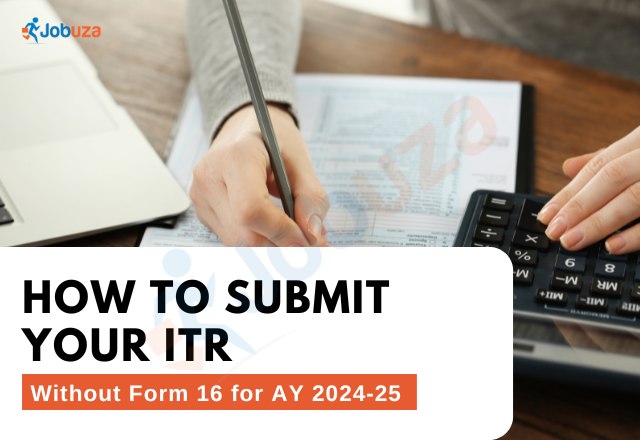How to File Your ITR Without Form 16 for AY 2024–25
Filing your Income Tax Return (ITR) without Form 16 might seem challenging—especially for salaried individuals—but it is entirely doable with the right documents. For the Assessment Year (AY) 2024–25, i.e. Financial Year (FY) 2023–24, the deadline to file your ITR without penalty is 31st July 2025. Even if you haven’t received Form 16 from your employer, you can still file your return accurately using alternative sources.
What Is Form 16 and Why You Might Not Have It
Form 16 is a certificate issued by your employer. It contains details of your salary and the Tax Deducted at Source (TDS) during the financial year. You may not have Form 16 if:
-
Your employer didn’t issue it on time
-
You’ve changed jobs and didn’t collect it from your previous company
-
The company has shut down
If that’s the case, don’t worry—you can still file your return based on your salary slips, bank statements, and Form 26AS.
Step 1: Gather Salary and TDS Details from Alternative Sources
Start by collecting your monthly salary slips to calculate your total annual salary. Include:
-
Basic pay
-
House Rent Allowance (HRA)
-
Bonuses
-
Any other allowances
Next, check your bank account statements for monthly salary credits. This helps verify the income you’ve received.
Then, log in to the Income Tax e-filing portal and download your Form 26AS or Annual Information Statement (AIS). These documents show all TDS entries made against your PAN by employers and other institutions like banks.
Step 2: Compute Total Income and Claim Deductions
Now, compute your gross income. Include:
-
Salary income
-
Interest from savings accounts or fixed deposits
-
Rent received (if any)
-
Capital gains (if applicable)
After calculating gross income, apply eligible deductions under various sections such as:
-
Section 80C – LIC, PPF, ELSS, EPF, etc.
-
Section 80D – Medical insurance premiums
-
Section 24(b) – Home loan interest
Keep supporting documents and receipts ready in case the Income Tax Department asks for them later.
Step 3: Choose the Correct ITR Form
Most salaried individuals can file using ITR-1 (Sahaj). However, if you have:
-
Capital gains
-
Income from more than one house property
-
Business or freelance income
…you’ll need to choose ITR-2 or ITR-3, depending on your income sources.
You can then either manually fill the form on the e-filing portal or pre-fill data using the AIS and TIS (Taxpayer Information Summary).
Step 4: File and E-Verify Your ITR
Once you’ve entered all the details and verified your tax payable or refund, submit your ITR online. But remember—your job isn’t done yet. You must e-verify your return within 30 days to complete the process. You can e-verify using:
-
Aadhaar OTP
-
Net banking
-
Bank account-based verification
If you don’t verify, your ITR will be considered invalid.
Final Thoughts: Filing Without Form 16 Is Absolutely Possible
Form 16 makes the process easier, but it’s not essential. As long as you have access to salary slips, bank records, and Form 26AS/AIS, you can file your ITR accurately. Just ensure that all entries are cross-verified, and keep documentation handy. Filing on time without Form 16 is completely legal—and well within your reach.


